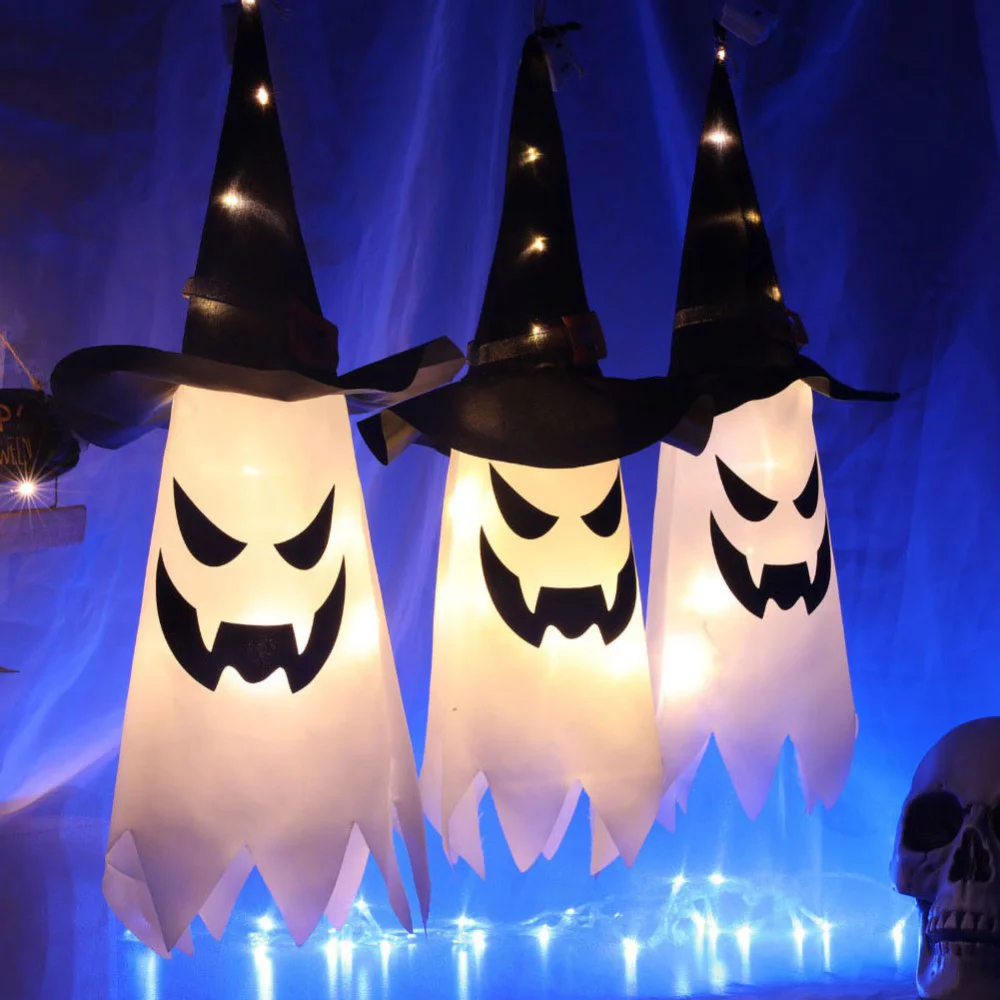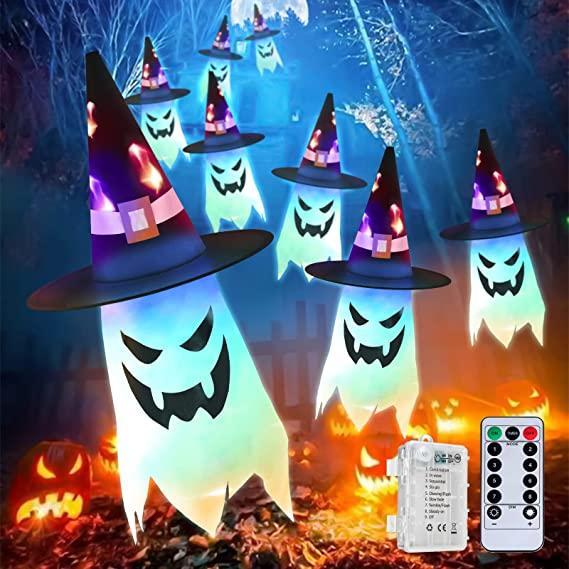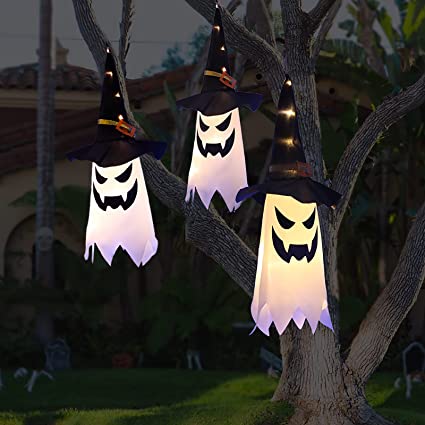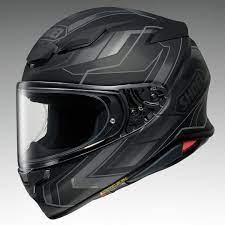Halloween Decorations Outdoor Decor Hanging Lighted Glowing Ghost Witch Hat Halloween Decorations Indoor Outside Ornaments Clearance Halloween Party Lights String for Yard Tree Garden(3Pcs)
UNIQUE HALLOWEEN DÉCOR: You will receive three glowing witch hat lights, which are ideal for hanging in the yard, on the patio, in the eaves, and in the trees. When darkness falls, they will appear to float in the air, creating a magical ambiance.
This Halloween decoration features grimace prints on both sides, and each witch hat includes a button so you can immediately turn on the switch to decorate your yard. This is the ideal combination of ghosts and lights to illuminate your Halloween and greet your neighbors.
There are three modes of light flashing that may be selected for the Halloween lights: slow glow, quick glow, and steady on and off. You can modify the mode by constantly pushing the button on the witch hat. Different lighting styles will create a variety of holiday atmospheres.
The Halloween lights can be used for both indoor and outdoor decorations. You can hang them in your home to create a spooky ambiance for your Halloween party, or you can hang them on a tree in your yard to create a sense of dread. Put it somewhere to adorn your Halloween party. It is ideal for decorating gardens, yards, trees, eaves, rooms, and parties.
Description
As an Amazon Associate We earn from qualifying purchases. Amazon and the Amazon logo are trademarks of Amazon.com, Inc, or its affiliates.
Halloween is a holiday that is observed every year on October 31. And Halloween 2022 will take place the following day, on Monday, October 31. The custom dates back to the ancient Celtic holiday known as Samhain. During this time people would light bonfires and dress up in costumes in order to fend off spirits. Pope Gregory III, who reigned in the eighth century, established the first of November as a day to celebrate all saints. Soon after, elements of the customs associated with Samhain were absorbed into All Saints Day. Before Halloween was ever a holiday. The evening before was celebrated as All Hallows Eve. Trick-or-treating, the carving of jack-o’-lanterns, festive get-togethers, donning costumes, and indulging in sweets are just some of the activities that have become associated with Halloween over the course of its history.
There are three variations of the name Halloween that are used in different parts of the world. Allhalloween, All Hallows’ Eve, and All Saints’ Eve. Over the course of the last decade, Halloween customs have been disseminated across the globe. And have seen significant growth in popularity in Europe. Every nation maintains its individuality and has its own culture when it comes to commemorating life and death.
All Souls’ Day
By the ninth century, Christianity’s influence had spread to Celtic regions. Where it increasingly merged with and replaced ancient Celtic rituals. In the year 1000, the church designated November 2 as All Souls Day. A commemoration of the deceased. It is widely accepted today that the church attempted to replace the Celtic feast of the dead with a related, church-sanctioned event.
On Halloween, when it was believed that spirits returned to the world of the living. People believed that if they ventured outside of their homes on that day, they would run into ghosts. When individuals left their homes after dark, they wore masks. So the ghosts would think they were other spirits and not recognize them as their own. This allowed them to escape being identified by the ghosts.
People used to put bowls of food outside their homes on Halloween to satisfy the ghosts. And discourage them from trying to enter their homes.
Halloween Customs Around the Globe
Austria
Austria has a Pumpkin Festival in Retzer Land named Kürbisfest in Retzer Land. Martini Day is celebrated in Austria on November 11. And the festivities include dressing up in costumes and walking about with lanterns. People in Austria have the superstition that if they light a lamp. Put out some bread and water, and leave the lamp lit all night. They will be able to welcome the spirits of the deceased back to earth for the night.
Ireland
Ireland is thought to be the birthplace of Halloween. There are a number of similarities between how Halloween is observed in Ireland and the United States. But the Irish have their own traditions. Additionally, trick-or-treating, youngsters play the game “knock-a-dolly”. In which they knock on their neighbors’ doors and then run away before they answer. In addition, the Irish play a card game on Halloween in which children select a card and earn the indicated prize. On this day, the Irish typically consume a fruitcake called barmbrack.
Japan
Halloween became popular in Japan after Tokyo Disneyland and Universal Studios Japan began promoting the holiday. In 2000, Tokyo Disneyland hosted its first Halloween celebration. Which has since increased in popularity by leaps and bounds. Currently, the Japanese delight in celebrating with decorations and costumes.
Belgium
In the country of Belgium, some towns and villages observe Halloween. While others put more emphasis on commemorating All Saints’ Day. On Halloween night, you might find a Belgian lighting a candle in remembrance of a loved one who has passed away.
Canada
The celebration of Halloween in Canada is said to have been started by immigrants from Scotland and Ireland who came in the 1800s. Every year on October 31, Canadians get into the Halloween spirit by dressing up, attending costume parties, and going door-to-door in search of candy.
China
Halloween was first celebrated in China by foreigners like teachers and other ex-pats who brought the holiday with them.
With offerings of goodwill and wealth for forthcoming crops, costumes served as a deterrent against monsters. Celebrants did not wear caps, makeup, or cloaks as they do today. For Samhain celebrations, individuals donned animal skins to disguise themselves, engage in pranks, and fend off anything that could wish them harm.
After fifty years, mumming became widespread, with children dressed up as frightening creatures. However, the practice is more widespread: children would dress up in exchange for gifts or beverages.
Dressing up for Halloween and going Trick-or-Treating
Due to its origins in Samhain, many confuse Halloween for a pagan holiday. However, Samhain and its traditions continue to play an important role in how people celebrate Halloween today. Including the wearing of costumes. Originally, it was a celebration of a rich harvest and the beginning of winter or the darker season. During this time, observers believed that the threshold between the world of the living and the world of the dead was at its thinnest. Making the realm of the living accessible to the dead.
In addition, children would go door to door requesting something called “soul cakes,”. Which is a sweet confection quite similar to biscuits. Which takes place on November 2 (yes, a third holiday!). In the early to middle of the 1900s, the candy-grabbing concept became popular in the United States. During this time period, families would provide sweets to youngsters.
The outfits, too, went through a period of development. Despite the fact that they originated as sincere homages to saints. It’s possible that this practice went out of favor at some point… until young mischievous people in Scotland and Ireland came up with the notion to dress up in clothing that appeared sinister once more. In order to scare people who weren’t expecting it. And just like that, thanks to some local hooligans, Halloween costumes went from being scary and eerie to also being amusing and inventive.
Modern Celebration of Halloween
Even in modern times, people put a lot of effort into their costumes. And plan them out several months in advance. With the flick of the wrist, mortals can transform into demons, horror movie villains, children’s movie characters, and television stars with the use of costumes. Costumes are no longer just for gloomy bonfire harvest celebrations.
These are some of the most popular Halloween decorations on Amazon.
As an Amazon Associate We earn from qualifying purchases. Amazon and the Amazon logo are trademarks of Amazon.com, Inc, or its affiliates.
Only logged in customers who have purchased this product may leave a review.










Reviews
There are no reviews yet.